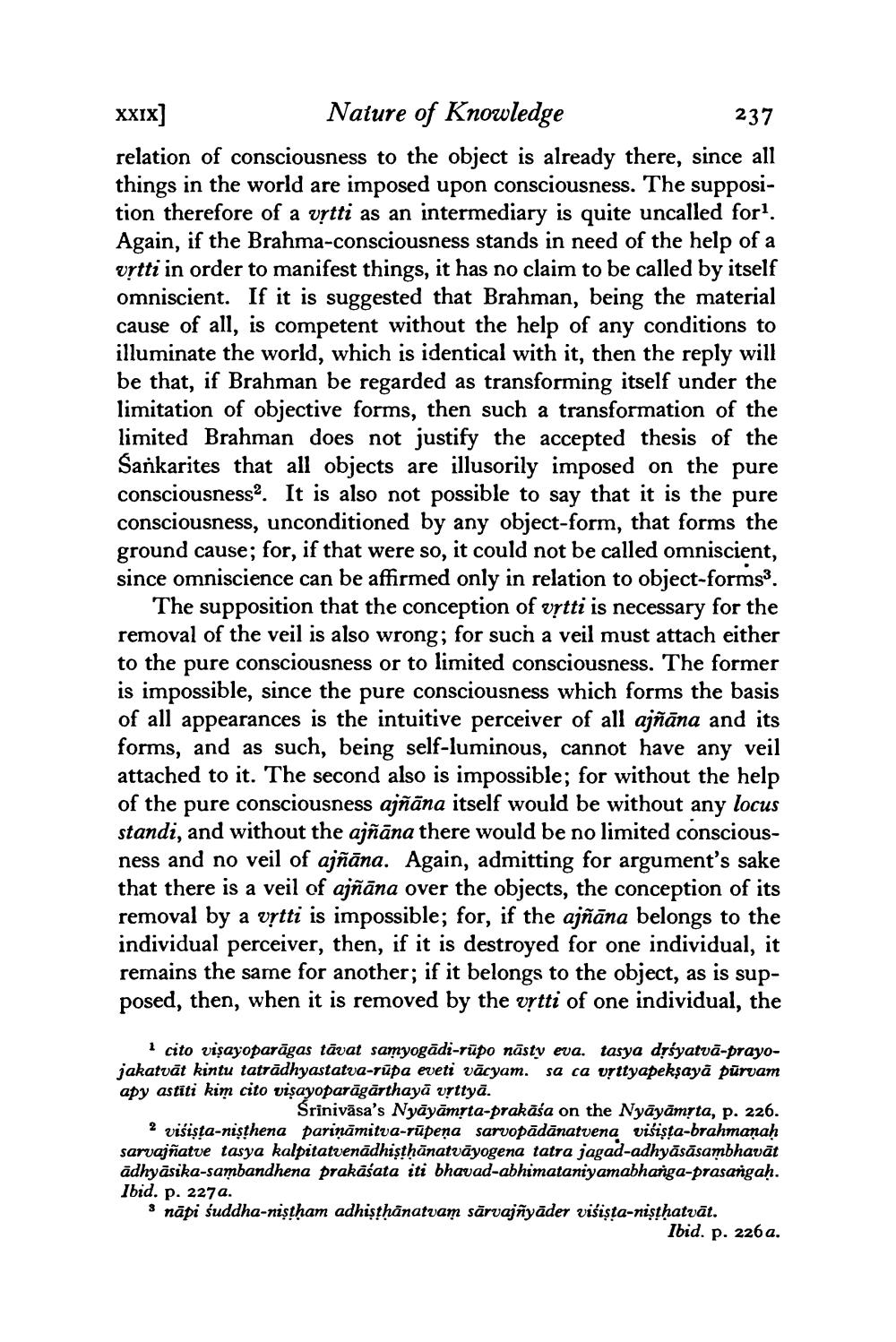________________
XXIX]
Nature of Knowledge
237 relation of consciousness to the object is already there, since all things in the world are imposed upon consciousness. The supposition therefore of a vrtti as an intermediary is quite uncalled for! Again, if the Brahma-consciousness stands in need of the help of a vrtti in order to manifest things, it has no claim to be called by itself omniscient. If it is suggested that Brahman, being the material cause of all, is competent without the help of any conditions to illuminate the world, which is identical with it, then the reply will be that, if Brahman be regarded as transforming itself under the limitation of objective forms, then such a transformation of the limited Brahman does not justify the accepted thesis of the Sankarites that all objects are illusorily imposed on the pure consciousness. It is also not possible to say that it is the pure consciousness, unconditioned by any object-form, that forms the ground cause; for, if that were so, it could not be called omniscient, since omniscience can be affirmed only in relation to object-forms.
The supposition that the conception of vrtti is necessary for the removal of the veil is also wrong; for such a veil must attach either to the pure consciousness or to limited consciousness. The former is impossible, since the pure consciousness which forms the basis of all appearances is the intuitive perceiver of all ajñāna and its forms, and as such, being self-luminous, cannot have any veil attached to it. The second also is impossible; for without the help of the pure consciousness ajñāna itself would be without any locus standi, and without the ajñāna there would be no limited consciousness and no veil of ajñāna. Again, admitting for argument's sake that there is a veil of ajñāna over the objects, the conception of its removal by a vrtti is impossible; for, if the ajñāna belongs to the individual perceiver, then, if it is destroyed for one individual, it remains the same for another; if it belongs to the object, as is supposed, then, when it is removed by the ortti of one individual, the
cito visayoparāgas tāvat samyogādi-rūpo nasty eva. tasya drśyatvā-prayojakatvāt kintu tatrādhyastatva-rupa eveti vācyam. sa ca vrttyapeksayā pūrvam apy astīti kim cito visayoparāgārthayā vịttyā.
Srinivāsa's Nyāyāmsta-prakāśa on the Nyāyāmặta, p. 226. ? višista-nişthena parināmitva-rūpena sarvopādānatvena višişta-brahmanah sarvajñatve tasya kalpitatvenādhisthanatvāyogena tatra jagad-adhyāsāsambhavāt adhyāsika-sambandhena prakāśata iti bhavad-abhimataniyamabharga-prasangah. Ibid. p. 227a. s napi suddha-niştham adhisthanatvam sārvajñyāder višista-nişthatvāt.
Ibid. p. 226 a.




